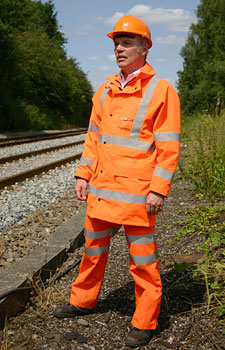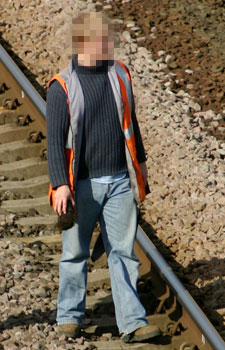|
In the dark, far off days of the late 19th Century, death on the railways was part of working life. Between 1875-1899, over 12,000 rail workers were killed in accidents at work. No, that’s not a typing error.
In 1899 alone, 531 men lost their life. The trade unions had to fight to get the basic necessities - lookout men, whistles and horns. Long hours, poor working conditions, silly rules and an absense of protective clothing did nothing to help a bad situation.
But workforce concerns were championed by the unions and they were eventually brought to the public's attention thanks to Parliamentary scrutiny. Things slowly improved (in relative terms) to the point where, in 1920, the death toll had dropped to half of the 1899 figure. Small mercies…
|
| ...workforce concerns were championed by the unions and they were eventually brought to the public's attention... |
|
At enquiry after enquiry the blame was put on the workforce (or “the servants” as they were known back then).
It was something of a culture shock when I started on the railway as a teenager in the 1950s. There was no induction or mentoring period - I was on the track from day one, wearing my dark blue overalls, black coat and a pair of store-bought heavy boots.
Black steam trains sped past. Others moved in different directions. And, as it got dusk, a small paraffin lamp on the front of the loco was all we could see. The trains themselves were invisible, just as we were to the driver and fireman. As many as 100 members of staff were still being killed on duty each year. Dark days indeed.
Change was slow in coming until someone had the bright idea of putting yellow paint on the front of the new diesel trains. A little ray of sunshine! And then came the hi-vis vest, toetec boots, train warnings and TOWS.
But some improvements had to be fought for - headlights on locos being a classic case. You would assume that fitting a lamp to a loco so that on-track staff could clearly see the approaching train would be relatively straight forward. But it took a ten year fight with the old British Rail to reach the position where all 'prime movers' had one fitted.
Then, in the 90s, the upheaval of privatisation brought more change and some improvement, leading to an 18-month period without a trackworker fatality.
So what of the future? Slowly yellow paint is disappearing from the front of trains, to be replaced by drab corporate colours. Some rail safety websites suggest that trackworkers need only wear HV on their upper body and then feature dreadful examples of low-visibility attire which must leave train drivers speechless. Having achieved full-body HV protection, what's the point of lowering the standard?
 |
|
 |
|
The full monty: all-over HV
|
The invisible man: patroling the 4-foot
|
See and be seen' - a life-saving mantra for every trackworker.
Don’t take us back to the dark ages.
Story added 1st March 2006
 |